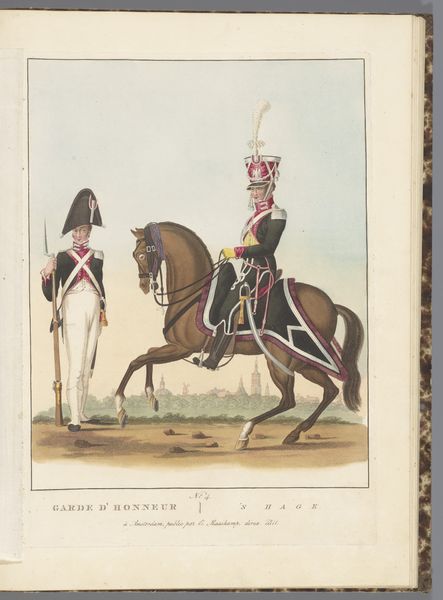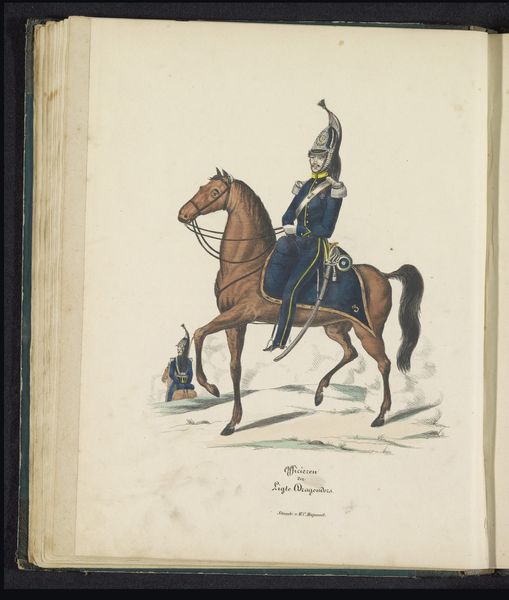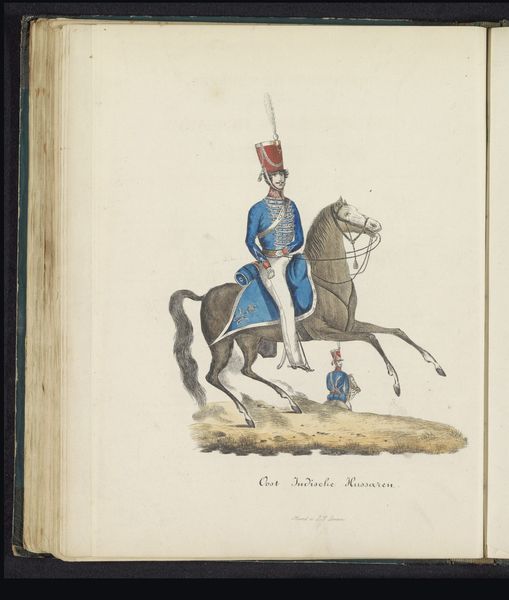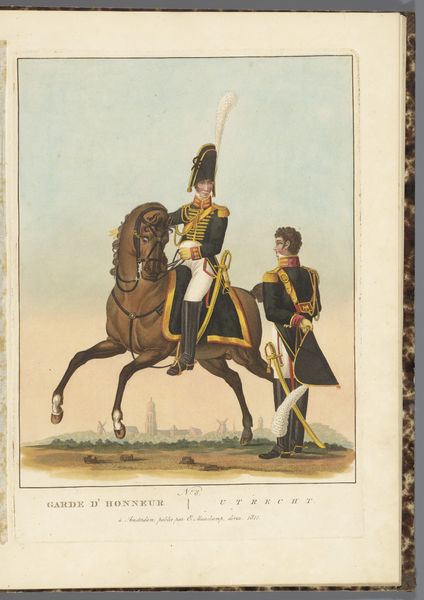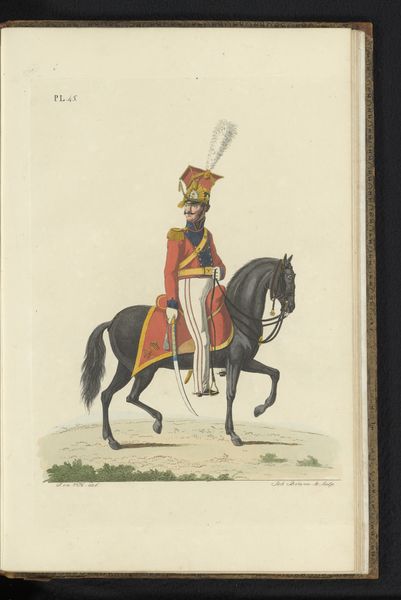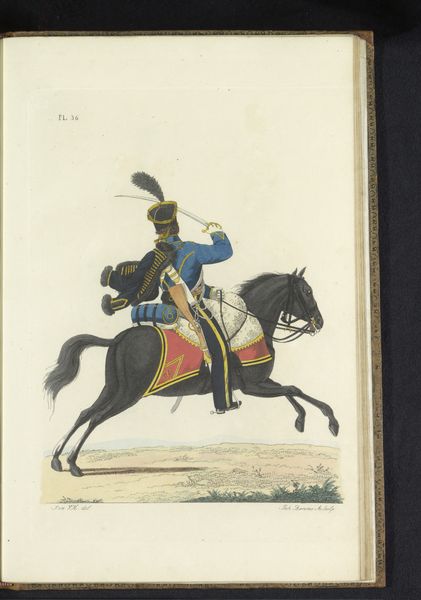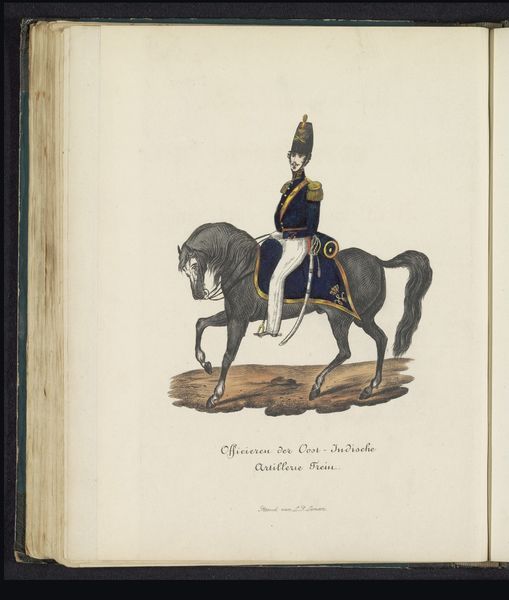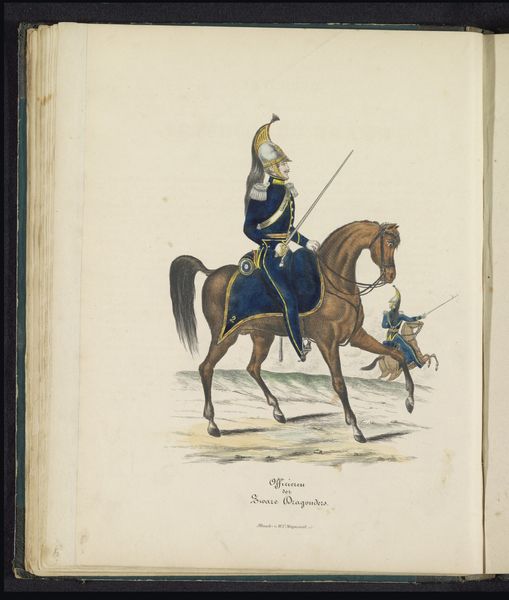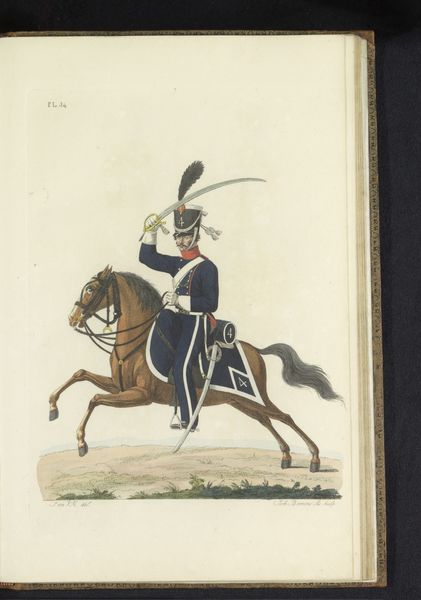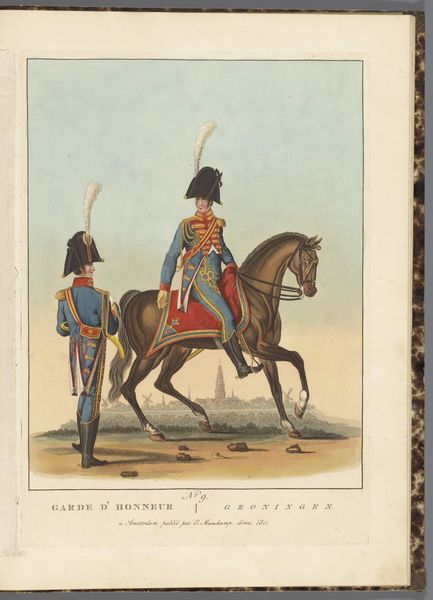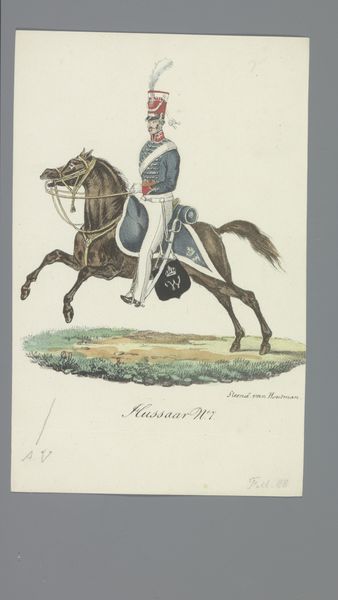
drawing, coloured-pencil, pencil
#
portrait
#
drawing
#
coloured-pencil
#
coloured pencil
#
romanticism
#
pencil
#
history-painting
Dimensions: height 300 mm, width 205 mm
Copyright: Rijks Museum: Open Domain
Editor: This is "Kurassier, te paard, in groote tenue," from 1823, by Abraham Lion Zeelander, rendered in colored pencil and graphite. The level of detail, particularly in the uniform, is striking! What can you tell me about this work? Curator: Look closely at Zeelander's choice of colored pencil. What does that tell us about artistic production at the time? He's not using oils, traditionally seen as “high art,” but embracing readily available, perhaps even mass-produced, materials. The very process democratizes image making. How does this impact our understanding of Romanticism? Editor: So, it's about shifting away from traditional techniques to incorporate more accessible media... How does that democratization challenge existing art hierarchies? Curator: Precisely. Notice the intricate rendering of the military garb. Think about the labor involved: the artist’s labor to create the image and the various laborers required to produce and maintain such attire. This elevates "craft" traditionally associated with textiles to the realm of art. How do we perceive the "grand tenue" when its very existence depends upon extensive human effort and the complex material supply chain? Editor: It's fascinating to consider it not just as a historical image but also as a product of social and economic systems. The materials themselves carry meaning. Curator: Exactly. And the act of drawing, the repetitive, almost mechanical process of layering colored pencil, mirrors, perhaps unconsciously, the industrial processes that made the soldier’s uniform possible. In this reading, Zeelander's choice isn't arbitrary; it is inherently linked to his subject matter. Editor: I hadn't considered the parallel between artistic process and industrial production. Thank you, I will view it through this different perspective. Curator: Considering the artwork in this way changes our understanding of art history.
Comments
No comments
Be the first to comment and join the conversation on the ultimate creative platform.



